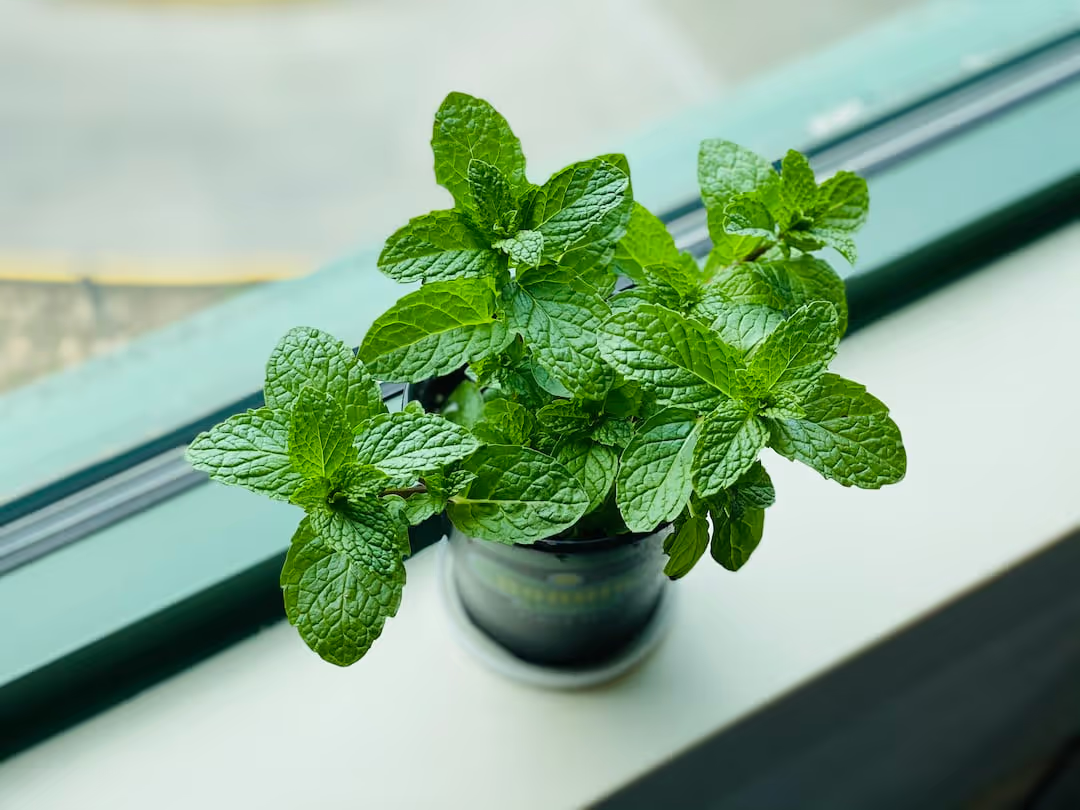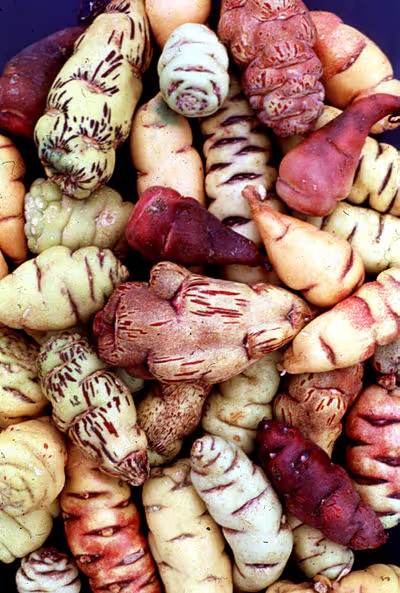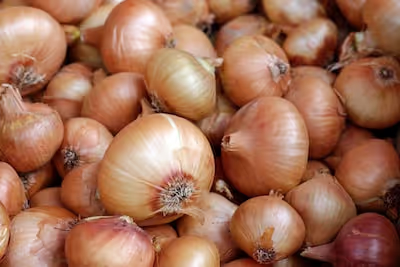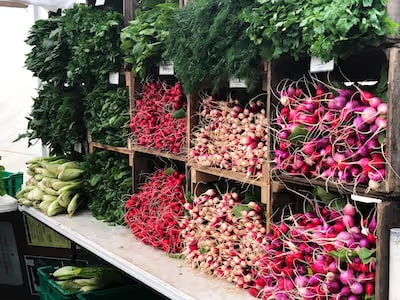Growing Mint: A Simple Guide for Lush, Aromatic Herbs

Growing Mint
Growing mint starts with choosing a sunny or partly shaded spot to plant sturdy seedlings. Growing mint thrives best in rich, moist soil, so work in compost before planting. Keep growing mint contained—either pot it or set firm boundaries—to prevent it from overtaking your herbs and veggies. Follow this simple guide to cultivate vibrant, flavorful mint perfect for culinary creations and invigorating teas.
Cheatsheet: Quick Mint Growing Skills
🌱 Quick Facts
- Perennial: Returns every year
- Harvest: 60-90 days after planting
- Potent: 1 plant can flavor 100+ drinks/meals
- Nutrition: Vitamin A, antioxidants
- Self-sufficiency: Easy for beginners
🌞 Ideal Location
- Light: 4-6 hours sun/day
- Soil: Moist, loose, well-drained
- pH: 6.0–7.0
- Spacing: 18-24 in / 45-60 cm apart
🧰 Tools and Products You'll Need
- Trowel
- Watering can
- Container (min. 12 in / 30 cm wide) or garden bed
- Quality potting mix
- Mulch (optional)
- Mint starter plant or rooted cutting
- Sharp scissors for harvest
📝 Step-by-Step Guide
- Prepare: Fill pot or garden bed with moist, rich soil. Add mulch to retain water.
- Plant: Set mint at same depth as pot. Water well.
- Contain: Keep roots in pots or barriers—mint spreads fast.
- Water: Keep soil damp, not soggy. 1 in / 2.5 cm per week.
- Feed: Use balanced fertilizer monthly.
- Trim: Pinch tips often to boost bushiness.
- Harvest: Snip stems above a leaf pair. Never cut more than ⅓ at once.
🌡️ Thrive & Protect
- Temperature: 55–70°F / 13–21°C
- Pests: Watch for aphids, spider mites
- Disease: Avoid overwatering to stop root rot
🍃 Use & Store
- Fresh: In drinks, salads, sauces
- Dry: Hang in bundles, store in jars
- Freeze: Chop & freeze in ice cubes
-
Growing Mint: A Simple Guide for Lush, Aromatic Herbs
I grow mint like a friendly controlled riot, because it tries to jailbreak the minute you turn your back. Manage the roots and you get endless sprigs with a scent that cuts through summer.
Site and soil that mint actually likes
Give mint full sun in cool summers or part shade where afternoons scorch, about 4 to 6 hours of light daily. Ideal temps sit at 60 to 80 F or 15 to 27 C.
Plant in loose loam with pH 6.0 to 7.0. I amend with well finished compost for moisture without muck.
In beds, space plants 12 to 18 inches or 30 to 45 cm. In containers, use at least a 12 inch wide pot that is 10 to 12 inches deep or 30 by 25 to 30 cm with drainage.
To control spread, sink a bottomless pot or install a rhizome barrier 12 to 18 inches deep or 30 to 45 cm with 2 inches or 5 cm protruding above soil. That lip saves you hours of root chasing.
RHS: "Mint spreads vigorously via underground runners and can become invasive if unchecked." Royal Horticultural Society, Grow Your Own Mint, 2023.
Planting calendar and simple propagation
Start outdoors after last frost when soil holds near 55 F or 13 C. I prefer divisions or cuttings since seed often drifts from true flavor.
Divide clumps in early spring by slicing clean wedges with roots and shoots. Water in well and shade for two days.
For cuttings, snip 4 to 6 inch or 10 to 15 cm tips, strip the bottom leaves, and root in water. Change water every couple of days and pot once roots hit 1 inch or 2.5 cm.
Water and feeding without diluting flavor
Keep soil evenly moist, roughly 1 inch or 25 mm of water a week, more in heat. I mulch with 2 inches or 5 cm of shredded leaves to steady moisture and cool the crown.
Mint is a light feeder. A thin spring layer of compost plus a modest fish emulsion feed keeps growth lush while avoiding nitrogen that can blunt oil intensity.
Light, shade, and heat management
Mint tolerates sun, yet afternoon shade keeps leaves tender in hot regions. In high heat over 90 F or 32 C I move containers to bright shade for better flavor.
Indoors, place under bright LEDs at 200 to 400 PPFD for 14 to 16 hours. Keep room temps 68 to 75 F or 20 to 24 C with gentle airflow.
Training, pruning, and harvest that ramps up yield
Pinch growing tips once plants hit 6 inches or 15 cm to branch hard. I clip to just above a node and the plant answers with a flush of shoots.
Shear back by half midseason to reset tenderness and control flowering. Harvest mornings after dew dries for the loudest aroma.
OSU Extension: "Oil concentration is highest just before bloom." Peppermint and Spearmint Production in the Pacific Northwest, PNW bulletin.
Pests, diseases, and fixes I use
- Mint rust Puccinia menthae: orange pustules on leaf undersides. Remove infected stems, thin for airflow, and replant clean divisions if it persists.
- Verticillium wilt: plants flag and collapse on warm days. Rotate out of the spot for 3 to 4 years and avoid moving contaminated soil.
- Aphids and spider mites: rinse with water, then use insecticidal soap if needed. I spray in the evening and skip harvest for a day.
Keep foliage dry, feed modestly, and space plants. Those three moves solve most mint troubles in my beds.
Overwintering and plant longevity
Most mints handle USDA zones 4 to 9 with mulch. In colder zones, heap 3 inches or 8 cm of straw or park the pot in a garage at 35 to 45 F or 2 to 7 C.
Divide clumps every 2 to 3 years to refresh vigor. Old centers can go woody and off flavor if ignored.
Hydroponic mint for steady kitchen harvests
Run solution pH at 5.8 to 6.2 with EC near 1.6 to 2.0 mS cm. Keep roots at 65 to 70 F or 18 to 21 C and lights at 200 to 400 PPFD.
Pinch weekly and harvest lightly, and the plant will cycle fast. I have pulled dense bunches every 10 to 14 days from small raft systems.
Varieties I rely on, and what they taste good with
- Peppermint Mentha x piperita: high menthol snap for tea, ice cream, and ganache.
- Spearmint Mentha spicata: soft sweetness for mojitos, tabbouleh, and grilled lamb.
- Apple mint Mentha suaveolens: fuzzy leaves with mellow fruit notes for salads.
- Chocolate mint Mentha x piperita f. citrata: cocoa on the nose, bright leaf on the tongue.
- Mojito mint Mentha x villosa: classic Cuban character for cocktails and aguas frescas.
- Corsican mint Mentha requienii: tiny creeper for pavers and micro garnish, keep evenly moist.
For consistent flavor, propagate these by cuttings or division. Seedlings swing wildly in aroma and oil balance.
Buying guide and gear that actually helps
- Containers: 3 to 5 gallon or 11 to 19 L fabric pots to air prune and slow root creep. Expect 10 to 20 USD.
- Soilless mix: 60 percent coir, 30 percent compost, 10 percent perlite with a pinch of lime for pH. It drains yet holds moisture.
- Rhizome barrier: 30 to 45 cm HDPE, 2 to 5 USD per foot. Overkill on paper, a sanity saver in practice.
- Shears: narrow bypass snips for clean cuts that do not bruise stems. Keep a spray of isopropyl alcohol for quick sanitizing.
- Dehydrator: low temp settings at 95 F or 35 C preserve perfume better than oven doors cracked with wishful thinking.
- LED bars: 20 to 30 W per square foot at 5000 to 6500 K for tight indoor plants. Clip on fans keep leaves dry and happy.
Post harvest handling for peak aroma
Dry small bundles in shade with airflow or use a dehydrator at 95 F or 35 C. Store in glass away from light and the jar will smell like summer for months.
Freeze chopped mint in ice cube trays with water or olive oil. Cubes keep 3 to 4 months at 0 F or minus 18 C.
Companions and ecological notes
Mint flowers draw syrphid flies and small bees that patrol aphids. I let a few stems bloom at the bed edge after the main harvest.
Keep the roots caged near veg beds. The scent is welcome yet the spread will steamroll lettuce if you let it.
Yield and quick numbers for planning
I average 0.3 to 0.7 pounds or 140 to 320 g per square foot of fresh herb in a long season with pinching. One vigorous plant in a 5 gallon or 19 L pot can fill a kitchen all summer.
OSU Extension: "Peppermint fields in the Pacific Northwest often yield 70 to 90 pounds of oil per acre." PNW bulletin, with fresh herbage commonly measured in tons per acre.
Starts usually run 3 to 6 USD each in spring. A single market bunch can become a dozen plants by rooting stems in water.
Field notes from repeated trials
I once skipped the barrier and watched mint swallow a 4 by 8 foot or 1.2 by 2.4 m bed in 60 days. Since then I bury bottomless buckets and sleep fine.
Under 40 percent shade cloth in July, spearmint tasted sweeter and less biting than in full sun. I repeat that trick every heatwave.
FAQ on Growing Mint
- Leggy plants signal low light or a cramped pot. Up pot and pinch to reset structure.
- Rusty spots mean mint rust. Cut to the crown, bin debris, and let clean shoots return.
- Grocery stems root fast if the cut ends look fresh. Trim, hydrate, and pot once roots appear.
- Mint near tomatoes is fine if potted. Do not let runners raid the tomato roots.
Sources and further reading
- Royal Horticultural Society. Grow Your Own Mint. RHS, 2023.
- Oregon State University Extension. Peppermint and Spearmint Production in the Pacific Northwest. PNW bulletin.
- University of Minnesota Extension. Growing mint. 2022.
- North Carolina State Extension. Mint Insect and Disease Management. 2021.
- USDA Agricultural Research Service. Mentha essential oil yield and composition reports.
Frequently Asked Questions about Growing Mint
What's the Ideal Spot to Plant Mint?
Mint welcomes the sun but appreciates some afternoon shade. Plant it in a spot where it gets about 5 to 6 hours of sunlight each day, somewhere with slightly damp, well-drained soil, where air breathes freely and moisture lingers without drowning roots.
Can Mint Be Grown Indoors?
Absolutely—mint thrives indoors, provided it's fed ample sunlight and decent airflow. Position the pot near an east or south-facing window, avoiding overly damp corners where stagnation breeds mischief.
How Often Should Mint Be Watered?
Water your mint consistently to sustain steady dampness, never allowing the roots to dry out entirely. Aim for once every few days, checking the soil surface. If the top inch feels dry, it's thirsty—quench accordingly, but avoid creating swamps.
Is Fertilization Necessary for Mint Plants?
Mint is resilient, rarely needing a fertilizer fix. However, an occasional dose of balanced organic fertilizer during peak growing season can give vigor, adding depth and nuance to the leaves' aroma and flavor.
Why is Mint Considered Invasive, and How Can It Be Controlled?
Mint pushes aggressively underground, expanding swiftly if left unrestrained. To keep mint in check, grow it confined within large pots or containers sunken in the ground, erecting invisible boundaries to halt its sprawling underground march.
What's the Best Way to Harvest Mint Leaves?
Pinch off or snip the fresh leaves regularly, cutting just above leaf nodes to encourage new growth, preventing plant legginess and inspiring lush fullness. Frequent harvesting encourages vibrant regeneration and enhances vitality.
How Can Mint Be Preserved Long-Term?
Mint dries remarkably well. Tie sprigs loosely and hang them upside down in a warm, dry spot away from direct sunlight. Alternatively, freeze mint leaves in ice cubes for an instant flavor kick in cocktails, teas, or culinary experiments whenever inspiration strikes.
What Are Common Mint Plant Problems to Watch For?
Mint resists pests readily, yet still attracts aphids, spider mites, and fungal issues, particularly when overcrowded or trapped in humid spaces. Prevention lies in providing adequate airflow, proper spacing, and vigilant inspection for trouble signs, intervening promptly with organic solutions or manual removal.
Growing Mint doesn’t ask for much—just a patch of sun, good earth, and a willingness to trim back its wild side. Start with cuttings or seeds, keep the soil consistently moist, and your reward is a tangle of leaves packed with bold scent and flavor. Corral it in a pot if you want to keep your garden from becoming a mint jungle. Harvest often, and the plant will answer with even more lush, aromatic growth. It’s classic, simple, and always delivers. Herbs like chives or dill make good companions, but mint stands on its own: a workhorse with attitude. Plant it, snip it, use it—repeat. That’s how you keep the garden honest, and the kitchen interesting.
The Homesteader's Take: Mint for Self-Sustaining Living
Medicinal Uses at Home
- Digestive Relief: Infuse leaves for tea aiding digestion and reducing nausea.
- Congestion Remedy: Inhale steam with crushed mint for gentle respiratory relief.
- Natural Pest Repellent: Rub fresh leaves on exposed skin to repel mosquitoes effectively.
Preserving Mint for Year-Round Use
- Drying Method: Tie sprigs loosely, dry upside-down in cool area away from sunlight for 2 weeks, then crumble into airtight jars.
- Freeze & Store: Freeze chopped leaves mixed with water in ice cube trays for easy use in beverages and cooking.
- Mint-Infused Vinegar: Fill sterile jars halfway with packed mint leaves, cover with warm vinegar (140°F/60°C), seal and store in cool, dark place 2 weeks; strain before use.
Mint Companion Planting Strategy
- Natural Pest Control: Place mint near cabbage and tomatoes—repels aphids, whiteflies, and cabbage moths.
- Container Planting: Grow mint in containers around sensitive crops to prevent invasive spreading while utilizing benefits.
Supporting Pollinators and Livestock
- Bee-Friendly Blooms: Allow mint to flower through late summer, providing ample nectar for bees and beneficial pollinators.
- Livestock Diet Supplement: Include moderate dried mint in chicken feed; aids digestion and boosts egg quality.
Find out which plants will thrive in your garden!
Answer a few fun questions and get custom plant recommendations perfect for your space. Let’s grow something amazing together!

start your season


.avif)


